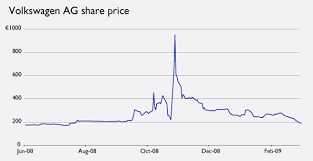What is Short Covering in Trading?

Short covering is a term used in trading to describe the process of buying back borrowed securities or commodities in order to close out a short position. When a trader takes a short position, they are essentially betting that the price of the asset will decrease. In order to do this, they borrow the asset from someone else and sell it on the market, with the intention of buying it back at a lower price in the future.
Short covering can occur for a variety of reasons. It may be driven by a change in market sentiment, where traders who were previously bearish on the asset start to become more optimistic. It can also be triggered by specific events or news that cause a sudden increase in the price of the asset.
Short covering can have a significant impact on the market. When a large number of traders start to cover their short positions, it can create additional buying pressure, which can further drive up the price of the asset. This can lead to a short squeeze, where short sellers are forced to buy back the asset at increasingly higher prices, resulting in even larger price increases.
In summary, short covering is the process of buying back borrowed securities or commodities to close out a short position. It is driven by a change in market sentiment or specific events, and can have a significant impact on the market dynamics.
Definition and Meaning
Short covering is a term used in trading to describe the act of buying back borrowed securities or assets in order to close out a short position. When an investor or trader takes a short position, they are essentially betting that the price of a security or asset will decrease. In order to do this, they borrow the security or asset from a broker and sell it on the market, with the intention of buying it back at a lower price in the future.
Short covering occurs when the trader decides to close out their short position by buying back the borrowed securities or assets. This is typically done when the trader believes that the price of the security or asset will increase, and they want to avoid potential losses. By buying back the securities or assets, the trader effectively returns them to the broker and closes out their short position.
Short covering is an important concept to understand in trading, as it can have a significant impact on market dynamics and price movements. Traders and investors need to carefully consider the potential risks and rewards of short selling and short covering before entering into these positions.
How Short Covering Works

Short covering is a strategy used by traders to close out their short positions in a security. It involves buying back the shares or assets that were initially borrowed and sold short in order to profit from a decline in price.
When a trader sells short, they are essentially borrowing shares or assets from a broker and selling them on the open market with the expectation that the price will fall. If the price does indeed decline, the trader can buy back the shares at a lower price, return them to the broker, and keep the difference as profit.
Short covering can be triggered by various factors, such as positive news about the company or a change in market sentiment. When other traders see that the price is rising, they may start to buy the stock as well, leading to a further increase in price. This can create a short squeeze, where traders who are short the stock rush to cover their positions, driving the price even higher.
Benefits of Short Covering
Short covering can be beneficial for traders in several ways. Firstly, it allows them to limit their losses and exit a losing position before it becomes too costly. By buying back the shares at a higher price, they can minimize their losses and protect their capital.
Risks of Short Covering
Another risk is that short covering can contribute to a further increase in price, especially if many traders are covering their positions at the same time. This can create a buying frenzy and lead to an even larger price increase, resulting in additional losses for the trader.
It is important for traders to carefully assess the market conditions and their own risk tolerance before deciding to engage in short covering. They should also have a clear exit strategy in place to minimize potential losses and maximize profits.
Examples of Short Covering in Trading

Short covering is a common occurrence in the world of trading, and there have been many notable examples throughout history. Here are a few examples that demonstrate how short covering can impact the market:
- Silver: In early 2021, there was a short squeeze in the silver market. A group of retail investors, inspired by the GameStop saga, attempted to squeeze the price of silver higher by buying up physical silver and silver-related assets. This caused panic among short sellers, who rushed to cover their positions, leading to a sharp increase in the price of silver.
These examples highlight the power of short covering and its ability to create significant market movements. Short squeezes can result in substantial losses for short sellers and can lead to volatile price swings. It is important for traders to be aware of the potential for short covering and to manage their positions accordingly.

Emily Bibb simplifies finance through bestselling books and articles, bridging complex concepts for everyday understanding. Engaging audiences via social media, she shares insights for financial success. Active in seminars and philanthropy, Bibb aims to create a more financially informed society, driven by her passion for empowering others.
